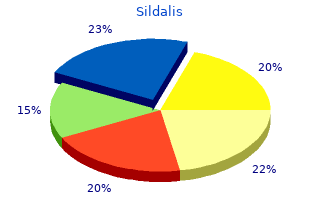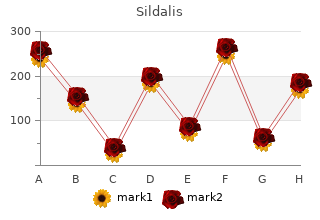Sildalis
2018, Saint Thomas University, Tuwas's review: "Sildalis 120 mg. Only $0,86 per pill. Quality online Sildalis OTC.".
When we speak of secondary (or 120 mg sildalis mastercard erectile dysfunction venous leak treatment, for Dewey buy sildalis 120mg online erectile dysfunction killing me, tertiary) qualities we conceptualize them either as attributes possessed by objects or as classes to which objects belong. As attributes, qualities are things contained by objects, whereas objects are contained in classes identified by qualities. But in truth, qualities are built in, not stuck on, and they permeate things rather than simply locating them in a cognitive space. And even though objects may have a center of gravity which could be called their originating location, they are diffused out to wherever their effects do or potentially could occur. The upshot of the fact that being and its qualities are spread over time and space is JOHN DEWEY’S PERSPECTIVES ON MEANS AND ENDS 79 that the "being" of any thing is wherever its effects are. In a 1941 essay entitled, "The Objectivism-Subjectivism of Modern Philosophy"19 Dewey asserts that ". There is no inconsistency between the idea of direct experience and the idea of objects of that experience which are as yet unrealized. Every plan, every prediction, every forecast and anticipation, is an experience in which some non- directly experienced object is directly experienced as a possibility. And, as previously suggested, modern experience is marked by the extent to which directly perceived, enjoyed, and suffered objects, are treated as signs, indications, of what has not been experienced in and of itself, or/and are treated as means for the realization of these things of possible experience. The ‘subjective’ factor (using the word to designate the operations of an accumulated organism) is, like ‘objective’ (physical subject-matter) a condition of experience. But it is that condition which is required to convert the conditions of kinds of objects, which as kinds represent generic possibilities, into this object. Experiencing subjects as evolved and "deployed," so to speak, and experi- enced objects as discovered, created, conceptualized and manipulated, interact to produce qualitative experience. The "conditions" of experience referred to above are the facts about subjects and about objects which make various kinds of experience possible. Bats have evolved a sonar apparatus to appreciate space and surfaces, whereas we have evolved vision and touch. The facts about our two species’ sensory systems are formal, material and quantitative, as are scientific facts about the objects we perceive. Very different experiences are made possible by the differences in us as subjects. We are not even remotely conditioned as subjects to experience the quality of bats’ experiences. Quantitative, structural, mensurable differences between us underlie our different qualitative experiences but do not in any way actually comprise them. Quantitative aspects of the objects perceived by us and by bats are similar, and certain quantitative isomorphisms of "large" or "smooth" or "impervious" must exist and affect, in vaguely similar ways, our experiences, but the qualities we experience underlying vaguely similar conclusions about spaces and objects must be radically different. Our differences exemplify the way quantitative relations underlie and make possible encounters of quality. And, I should add, there is no basis for asserting that the quality of a space experienced by a bat is less real than that experienced by ourselves. VALUES INTERACTIONAL, NOT RIGIDLY COMPARTMENTAL In Dewey’s work, "value" is a term which is closely related to "good" and "end. It is perhaps only a truism that economic value does not, for example, exist in a vacuum. Things are only of economic value when they are perceived to contribute to biological, aesthetic or psychological satisfaction. The usual view of economic value is that it also involves scarcity or the need for labor. But people invent, labor on, search for and defend the possession of scarce objects only in a milieu of actual and potential biological, aesthetic, moral or psychological satisfaction. And resources like air certainly are of value (though not except in special circumstances of market value) even prior to and apart from being scarce or requiring the investment of labor. He claims that there is no real distinction between expedient and right action when all the consequences are taken into account. In making this claim, he is focusing on and locating moral value especially in natural consequences, be they consequences for the actor or the objects acted on. His idea of expediency is not short term and narrowly construed gain at the expense of moral character, but the broad result of endeavor, reflectively assessed. The satisfaction of thirst, the provision of adequate shelter, the relief of pain, freedom of expression, the cultivation of temperance: all such desiderata are included within the spheres of both economics and morality.


A patient describing nocturnal or resting symptoms will be a sig- nificant characteristic cheap sildalis 120mg line prices for erectile dysfunction drugs. Establishing a baseline pattern of cardiac-related symptoms could include questions on: • frequency • intensity • duration • trigger factors buy sildalis 120mg fast delivery erectile dysfunction in diabetes ayurvedic view, e. Gathering all this information gives the CR exercise leader and CR team an initial indication of physical and psychological functioning, and of whether symptoms are likely to be a limiting factor. It also enables comparison of these factors pre- and post-rehabilitation, by which time the patient may have learnt to manage symptoms more effectively, have gained confidence and improved level of function. Within the context of risk stratification, assessing cardiac symptoms directly links the ischaemic burden and functional capacity, if the patient can describe a level of exertion required to bring on symptoms. However, it must be remem- bered that the relationship between symptoms, functional ability and disease severity is complex; patients with the most severe disease do not always demonstrate the most limitation or disability. Lewin (1997) suggests that other Risk Stratification and Health Screening for Exercise 35 factors, such as health beliefs, anxiety and depression, personality, social support, social class and the patient’s own attempts to cope will influence the level of disability demonstrated (see more in Chapter 8). OCCUPATION Return to work is an important measure of successful CR for some individu- als with CHD. Variables which contribute to a successful return to employ- ment or being considered fit to work include shift patterns, self-efficacy, perception of control over work demands and physical job requirements (ACSM, 2001). The process of assessment for exercise, the consequent advice and guidance, and the exercise prescription itself should contribute to a tailored return to work needs for appropriate patients. These discussions to establish realistic return to work plans should commence as early as possible in the rehabilita- tion process. The aims of the occupational assessment are: • discuss job demands (physical and psychological) and concerns; • provide provisional timelines for return to work based on job analysis; • provide an individualised exercise prescription based on job analysis; • consider whether specific occupational carrying or lifting tests should be used for prescription. Occupation, work conditions and demands may also impact on patients’ ability to commit to attending cardiac rehabilitation programmes. The clinician may need to consider adapting supervised sessions or creating flexibility within pro- grammes to accommodate work commitments, or to involve, where possible, not only the patient but the employer or occupational health representative in planning a rehabilitation programme. When considering occupation, level of physical effort, including arm versus leg work, carrying and lifting activities, sustained versus bouts of exer- tion and environmental conditions could influence the type of exercise pre- scribed for assisting return to work. Driving occupations often require re-licensing using strict criteria on ETT (DVLA, 2004). The CR clinician can use assessment information and rehabilitation to prepare the patient for ETT requirements or to ascertain whether attainment of the level of func- tional capacity required for re-licensing is realistic for that individual. A detailed discussion around occupation at baseline assessment will reveal whether the patient considers himself or herself ready for return to work. This discussion is important when setting and working towards patient-centred goals. Despite many patients reporting that their jobs are physically active, most occupations require an energy expenditure of less than 5METs (ACSM, 2001). As the patient population within phase III cardiac rehabilitation expanded and became more inclusive for those with more limited exercise ability, either through age or complex medical history, so our assessment had to expand to consider a diverse and substantial number and combination of orthopaedic, neurological, respiratory, vascular and musculoskeletal conditions. Of the 701 interventions carried out over a two-month period, 72% of these were to adapt exercise programmes in light of non-cardiac conditions or to give advice on the same. This highlights the importance both of individualising exercise prescription in the presence of co- morbidity and of having suitably trained exercise professionals to assess, advise patients and deliver phase III cardiac rehabilitation. The increase in participants with co-morbidity presents the exercise pro- fessional in cardiac rehabilitation with prescription and programme manage- ment challenges that will be further discussed in Chapter 4. Limitation of functional capacity will often be attributable not to coronary heart disease but to co-morbid conditions. This may mean that functional capacity assessed by means of walking is both ineffective and inappropriate. Can we, therefore, effectively prescribe exercise to accommodate this diver- sity, and can we implement outcomes to measure the effectiveness of our interventions? Unfortunately, there does not appear to be a gold standard for measuring physical functioning, either by performance-based or self-report measures (Pepin, et al. As with most aspects of CR it is likely that a variety of measures will need to be considered on an indi- vidual patient basis. In addition, there are proposals of a link between co-morbidity and risk during exercise. They also applied a co-morbidity index (CMI) which ‘predicts short and long-term mortality rates for a specific medical condition’. This CMI index has been shown to indicate a ‘progressive 10-fold increase in mortality as the score increases’, with common co-morbid conditions given a weighted score.
Sildalis
10 of 10 - Review by D. Randall
Votes: 45 votes
Total customer reviews: 45 |



